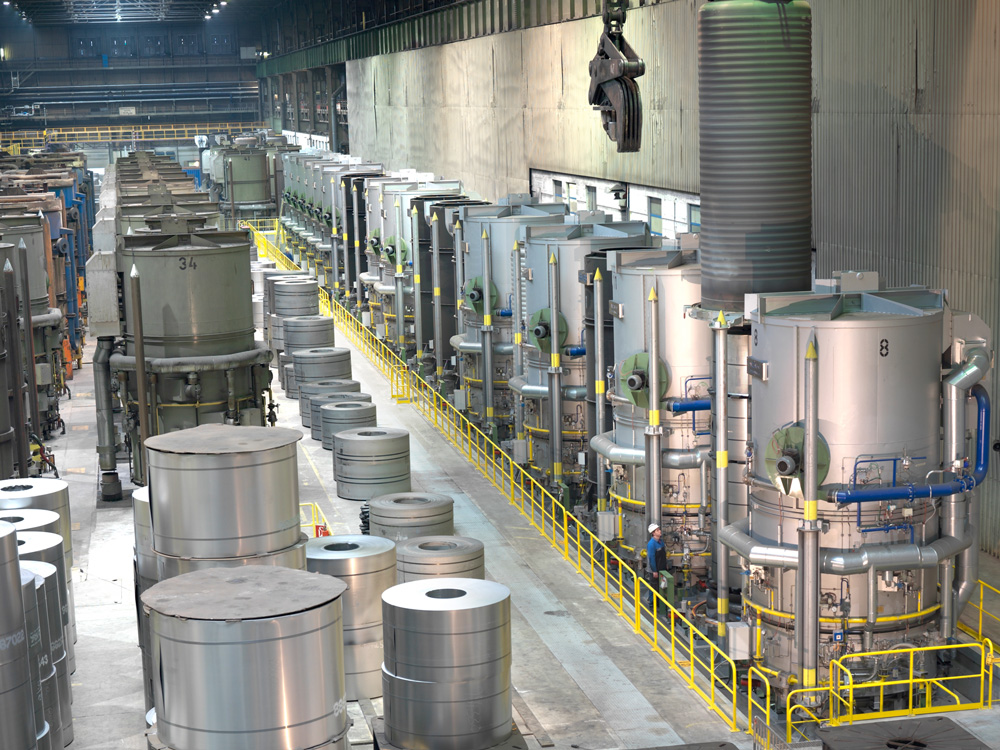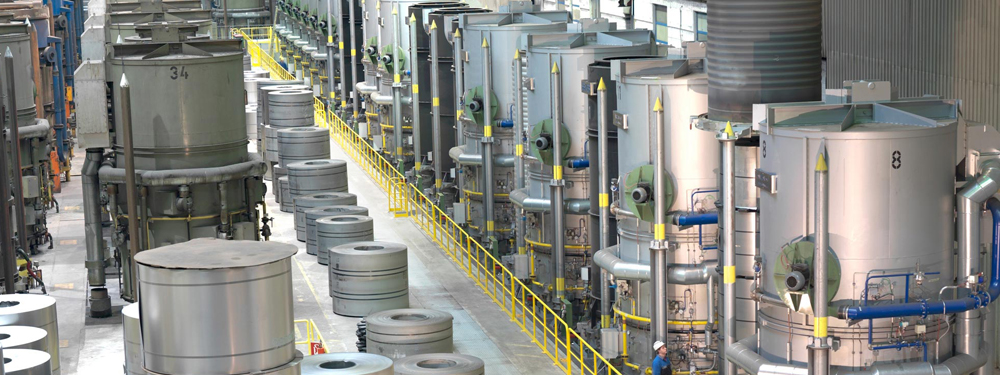HICON/H₂ bell annealer for electrical steel strip (BAF)
HICON/H2 bell annealers for electrical strip (BAF).
HICON/H2 bell annealer facilities – the technology that revolutionized the heat treatment of steel strip coils.
Today, HICON/H2 is internationally known as a synonym for excellence in quality, productivity and lowest production costs. But it is undoubtedly the exceptional quality of steel coils annealed in 100 % hydrogen which has made HICON/H2 technology so successful.
Through intensive collaboration with partners in the industry, EBNER is able to tailor each HICON/H2 bell annealer to each customer’s needs. New solutions, new products and the optimization of existing processes are all supported.
Thanks to continual technological advances by EBNER‘s R&D department, HICON/H2 bell annealers achieve shortest possible annealing and cooling times while simultaneously keeping operating costs low. Customers in more than 45 countries worldwide are profiting from this technology and its value-for-money as they boost efficiency.
The facility can be implemented to comply with the standards required by the automotive industry, in accordance with CQI-9 (AIAG).
The following advantages are provided by the EBNER facility design:
- Lowest dewpoints and up to 100% hydrogen atmosphere ensure the least possible amount of surface oxidation and the best results during rolling/skin passing
- Shortest possible heating and cooling times, achieved through a combination of high convection (HICON) and the use of 100 % hydrogen (H2) atmosphere, ensure maximum productivity
- 100 % load-bearing surface for the coil at the bottom of the stack, paired with optimized convector plate designs, to protect the edges of the strip → this reduces the likelihood of strip breakage and scrap in downstream production steps
- Low energy consumption and low maintenance requirements due to refined design and high-quality manufacturing
Applications
Bell annealers are used to heat treat non-grain-oriented electrical strip, both hot-rolled and cold-rolled, at temperatures between 650 and 900 °C. These processes can be grouped as follows:
Hot-rolled strip
- Improvement of magnetic characteristics by controlling the texture (crystalline orientation)
- Material temperatures: 750 – 900 °C
Cold-rolled strip
- Recrystallization of the microstructure of non-final-annealed electrical strip for the subsequent skin pass → activation of the material for the final anneal at the end customer
- Material temperatures: 650 – 750 °C




